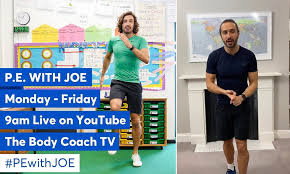Wellness in Schools, part 1: what that looks like at school
What is school wellness exactly?
All school districts that receive federal funding for free and reduced breakfast and lunch programs are required to have a wellness policy. These policies primarily focus on two areas: healthy food best practices and physical activity best practices. Individual school buildings often have their own wellness policies as well, catered to their unique needs and abilities.
Food Policies

A large part of a school wellness policy covers rules and regulations related to food, ensuring the food served follows nutritional guidelines that include serving whole grains, fresh fruit and vegetables, milk, low-fat protein and limiting sweets and high-sugar foods. Wellness policies can address many other food rules that may not be obvious, including limiting the hours vending machines may operate, regulating the types of food offered in vending machines or in snack bars or are offered at after school activities, or implementing a healthy celebrations policy to ensure that cake and cupcakes aren’t part of every school day. The picture to the left features a cucumber and radish salad that was featured at a school is MSD Warren. The school designates certain days to introduce kids to new, healthy foods, prepared and served in appealing ways. That day was Rah, Rah Radish Day!
Physical Activity Policies
The second part of a school’s wellness policy deals with physical activity, which can cover everything from recess time to P.E. classes to physical activity in the classroom, to afterschool sports and enrichment offerings, to punishment policies. Some schools withhold recess or P.E. as a standard punishment for children when needed. That’s not a best practice. Part of a school’s wellness policy may include NOT withholding opportunities for physical activity as punishment.
NEXT WEEK: In part two of this series, we’ll take a look at implementing school wellness policies at home, since so many kids are doing distance learning or e-learning right now. Many of the best practices can be applied to your home environment and routine. Keep an eye out!

School Wellness Policies – did you know?
Did you know that all schools that accept federal funding for free/reduced lunches are required to have a wellness policy that is available to the public? If you are a parent, we encourage you to ask your child’s school to see their wellness policy, learn more about their wellness committee (if there is one), or take the lead yourself and put together a wellness committee to support the school’s efforts. We’ve put together a toolkit for parents and/or community members who want to understand how school wellness policies work and how they can get involved. You can also access a sample wellness policy here. In our next blog post, we’re going to take the wellness efforts that schools make and figure out how you can apply them at home, as so many kids are going to school at home right now.

While school wellness policy may be required, actually enforcing it or fulfilling its objectives is a somewhat looser process. Jump IN’s schools-focused work, a project called Jump Right UP, was launched in the 2018-2019 school year with support form the Indianapolis Colts. The Marion County Health Department now helps Jump IN provide the program. Jump IN’s schools expert, Haley Loechel, has worked with 49 schools in four school districts: MSD Pike, MSD Lawrence, MSD Warren and Indianapolis Public Schools to help them set and achieve wellness goals that align with their wellness plans. Last week the Alliance for a Healthier Generation announced its award rankings for the highest-performing schools in the country related to school wellness initiatives. You can read here that MSD Pike was lauded with several bronze awards. No Indiana school has yet been awarded with a silver or gold distinction, but we are working toward it. Schools have so many obligations to students and families – not only are they trying to educate kids at a high level, many of them are also responsible for feeding kids most of their meals, helping with support services for families, ensuring appropriate enrichment activities like sports leagues and the arts, and right now, many school districts are also navigating all of the aspects of distance learning. Part of what makes Jump Right UP so valuable to schools is the direct technical assistance the schools get from Haley to help them plan step by step how to make their school environments and practices healthier. Haley also helps schools understand the importance and value of creating environments that follow healthy best practices.
Mini workout of the week: P.E. with Joe!

Joe Wicks offers 5 Minute Moves for all ages – you can subscribe to different series of physical activity videos on his YouTube channel. Lots of great resources for kids and families with Joe – he has 5 minute videos for short breaks and a daily series of 30-minute workouts for all ages.
Topics: Healthy Eating, Physical Activity, Schools
Subscribe for more
Want more ideas for healthy schools, workplaces, child care providers, and families? Subscribe to our blog for weekly tips delivered right to your inbox!
Understanding portion sizes NEXT »
Part 2: School Wellness When Home is School
